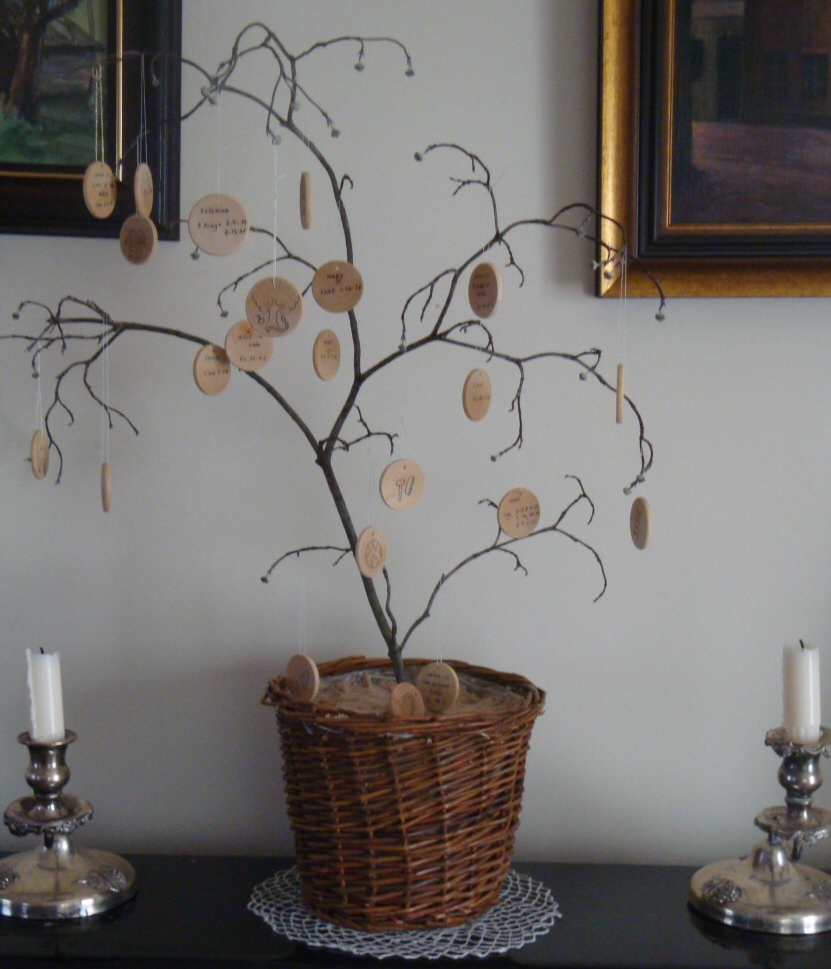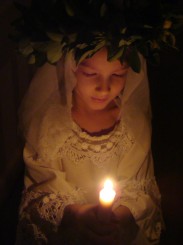Acompáñanos a celebrar la Semana Nacional del Matrimonio (del 7 al 14 de febrero de 2019), tomándote unos momentos cada día para reflexionar y orar con tu cónyuge. El tema de este año es: El matrimonio, hecho por una razón. Este retiro te ayudará a reflexionar sobre lo que hace que el matrimonio sea algo único, tal como fue establecido por Dios, entre un hombre y una mujer, como la base de la familia y la sociedad.
Para más instrucciones o inspiración, visita el sitio web marriageuniqueforareason.org.
Día 1 – El matrimonio: hecho por Dios
Abriendo el tema
A pesar de las grandes diferencias entre las culturas, sociedades y religiones, el matrimonio siempre se ha considerado un vínculo sagrado que expresa una forma profunda y comprometida de amor mutuo. El matrimonio no es, sin embargo, una institución puramente humana: “el estado matrimonial fue establecido por el Creador y dotado por él con sus propias leyes… Dios mismo es el autor del matrimonio” (GS, 48).
¿De qué manera es Dios el autor del matrimonio?
Primero, “Dios creó al hombre a su imagen; a imagen de Dios lo creó; varón y hembra los creó” (Gén. 1:27). Dado que el hombre y la mujer son creados a imagen de Dios, quien es Amor, el amor es una vocación innata del hombre y de la mujer. El matrimonio responde a un deseo fundamental y a la necesidad de dar y recibir amor.
Segundo, como varón y hembra, Dios creó al hombre y a la mujer con una complementariedad anatómica única que posibilita la colaboración con Su trabajo de creación. La naturaleza misma del hombre y de la mujer está preparada para la posibilidad del matrimonio y del recibimiento de una nueva vida.
Tercero, la Sagrada Escritura afirma que es bueno que un hombre y una mujer se pertenezcan el uno al otro y formen un vínculo de comunión: “No es bueno que el hombre esté solo” (Gén. 2:18)…”Por tanto, dejará el hombre a su padre y a su madre, y se unirá a su mujer, y los dos serán una sola carne (Gén. 2:24). En el Nuevo Testamento, Jesús invoca el plan original de Dios para la humanidad como una unión inquebrantable de dos vidas, recordando el plan inicial del Creador: “Así que ya no volverán a ser dos, sino una sola carne” (Mt. 19: 6)
En el plan divino, el matrimonio es la comunión exclusiva e indisoluble de vida y amor entre un hombre y una mujer. Entre dos cristianos bautizados, esta alianza es un sacramento.
Reflexión
Como católicos, la comprensión del plan de Dios para el matrimonio y la familia es una parte esencial de vivir el llamado a la santidad. Los esposos católicos han sido bendecidos con la certeza de que el sacramento del matrimonio proporciona las gracias necesarias para santificarse como esposo y esposa, padre y madre. Esta gracia otorga fuerza a la alianza matrimonial y la fortalece en momentos de dificultad. También se traslada a la iglesia doméstica, el hogar, donde la familia crece y se convierte en un testigo del amor de Dios hacia los demás.
Sin embargo, el plan de Dios para el matrimonio no se limita a los católicos. Como se explicó anteriormente, está enraizado en la naturaleza e identidad del hombre y de la mujer, creados a imagen de Dios. La dignidad del matrimonio con su propósito y características específicas es un bien que debe sostenerse y defenderse para beneficio de todas las personas.
Para pensar
Para iniciar esta semana de reflexión, pregúntense individualmente y como pareja:
a) ¿Qué hace al matrimonio distinto de otras relaciones? ¿Por qué el amor y el compromiso matrimonial son únicos? ¿Qué significa cuando se dice que Dios creó el matrimonio en el mismo momento en que creó al ser humano?
b) Como pareja, ¿cómo nos complementamos en nuestras necesidades, deseos y atributos? ¿De qué manera nos otorga Dios los diferentes dones, como hombre y mujer, que contribuyen al matrimonio?
(c) ¿Cómo podemos, como pareja, dar testimonio de la belleza y la sabiduría del diseño del matrimonio hecho por Dios?
Oración de las parejas casadas
Dios todopoderoso y eterno,
bendijiste la unión de marido y mujer
para que podamos reflejar la unión de Cristo con su Iglesia:
míranos con bondad.
Renueva nuestra alianza matrimonial.
Incrementa tu amor hacia nosotros
y fortalece nuestro vínculo de paz
para que [con nuestros hijos]
podamos siempre regocijarnos en el regalo de tu bendición.
Te lo pedimos a través de Cristo nuestro Señor. Amén.
Día 2 – El matrimonio: hecho para el amor
Abriendo el tema
El matrimonio entre un hombre y una mujer responde al anhelo más profundo del corazón humano por el amor y la pertenencia. Anhelamos ser amados y recibir amor. Lo mismo puede decirse de la vida familiar: en una familia, los hijos son recibidos para ser amados y retornar ese amor.
A pesar de las limitaciones humanas, la pareja casada y la familia son reflejos de Dios, quien es tres personas divinas en una comunión de amor. En el matrimonio, el hombre y la mujer se convierten en “una sola carne” (Gén. 2: 24), una comunión de amor que genera nueva vida. De manera similar, la familia humana se convierte en una comunión de amor a través del intercambio de amor entre sus miembros.
El matrimonio y la vida familiar son escuelas de amor. Nos enseñan cómo alcanzar una comunión de amor en el contexto de la vida cotidiana: llena de alegrías, sacrificios, pruebas y esperanzas. En todo esto, el amor se purifica y se perfecciona, se hace auténtico y completo. Como el ejemplo del sacrificio de Cristo en la cruz, el amor es dar la vida del uno por el otro. Los cónyuges y los miembros de la familia están llamados a hacer lo mismo todos los días.
Reflexión
A pesar de nuestros mejores esfuerzos para amar fiel e incondicionalmente, el matrimonio y la vida familiar pueden ser difíciles y desafiar nuestra capacidad de amar continuamente. Sin embargo, el amor conyugal que es bendecido por el sacramento del matrimonio es fortalecido y sostenido por una gracia única que pretende “perfeccionar el amor de la pareja y fortalecer su unidad indisoluble” (CCC, 1641). En virtud de esta gracia, la pareja se ayuda mutuamente para alcanzar la santidad.
La fuente de esta gracia es Cristo. “Así como en la antigüedad Dios se encontró con su pueblo a través de una alianza de amor y fidelidad, así nuestro Salvador, el cónyuge de la Iglesia, se encuentra ahora con esposos cristianos a través del sacramento del matrimonio” (GS, 48). Cristo vive con ellos, les da la fuerza para tomar sus cruces y puedan seguirlo, levantarse de nuevo después de haber caído, perdonarse el uno al otro, sobrellevar el uno la carga del otro, “someterse el uno al otro por respeto a Cristo, “y amarse el uno al otro con amor sobrenatural, tierno y fructífero” (CCC, 1642).
Para pensar
Elige una o más de las siguientes preguntas para reflexionar con tu cónyuge:
(a) ¿Qué hace que el amor entre el hombre y la mujer sea único, especialmente dentro de la relación matrimonial? ¿Qué hace que el amor de los miembros de una familia sea una comunión entre personas?
(b) ¿Cómo son nuestras escuelas de amor matrimonial y familiar? Como pareja y familia, ¿demostramos una comunión de amor que se nutre a sí misma, que es pura y sacrificada?
(c) Como pareja, ¿qué tanto confiamos en la gracia del sacramento del matrimonio para que nos ayude en los momentos de retos y dificultades?
Oración de las parejas casadas
Dios todopoderoso y eterno,
bendijiste la unión de marido y mujer
para que podamos reflejar la unión de Cristo con su Iglesia:
míranos con bondad.
Renueva nuestra alianza matrimonial.
Incrementa tu amor hacia nosotros
y fortalece nuestro vínculo de paz
para que [con nuestros hijos]
podamos siempre regocijarnos en el regalo de tu bendición.
Te lo pedimos a través de Cristo nuestro Señor. Amén.
Día 3 – El matrimonio: hechos el uno para el otro
Abriendo el tema
Dios creó al hombre y a la mujer juntos y quiso que fueran el uno para el otro. “No es bueno que el hombre esté solo. Voy a crear a alguien adecuado a sus necesidades para que lo ayude” (Gén. 2:18). La mujer que Dios ‘fabrica’ de la costilla del hombre, hace que él exclame maravillado, con amor y comunión: “Ésta, por fin, es hueso de mis huesos y carne de mi carne” (Gén. 2: 23). Este hermoso relato del libro de Génesis sobre la creación de Eva del costado de Adán demuestra cómo la mujer fue creada específicamente como ayudante, compañera y pareja adecuada para el hombre. A diferencia de cualquier otro ser creado, el hombre descubre a la mujer como su otro “yo”, como alguien que comparte su misma humanidad (ver CCC, 371).
“El hombre y la mujer fueron hechos ‘el uno para el otro’, no es que Dios los haya dejado a medias e incompletos: él los creó para que sean una comunión de personas, en donde cada uno puede ser ‘compañero’ del otro, ya que son iguales como personas (“hueso de mis huesos…”) y complementarios como masculino y femenino” (CCC, 372).
Debido a que son personas iguales en cuanto a su humanidad, pero complementarios debido a sus diferencias como masculino y femenino, el hombre y la mujer contribuyen al matrimonio con dones únicos, especialmente a causa de las diferencias físicas de sus cuerpos que permiten la transmisión de la vida humana. Solo a través de la diferencia sexual, un esposo y una esposa pueden darse completamente a sí mismos.
Por lo tanto, la verdadera unión marital no es posible sin la diferencia sexual; la diferencia sexual es esencial para el matrimonio. La diferencia sexual es el punto de partida necesario para comprender por qué no es arbitrario ni discriminatorio proteger y promover el matrimonio como la unión entre un hombre y una mujer. Más bien, es una cuestión de justicia, verdad, amor y libertad real. Solo un hombre y una mujer, en todos los niveles de su identidad: biológicos, fisiológicos, emocionales, sociales y espirituales, son capaces de hablar auténticamente el lenguaje del amor conyugal, es decir, el lenguaje de la entrega de sí mismos, abiertos al don del otro y al regalo de la vida.
Reflexión
Nuestra masculinidad o femineidad es esencial para nuestra identidad como personas. Nuestro género no se añade a nosotros como algo posterior, ni tampoco es una parte incidental de quienes somos. El hombre y la mujer son dos tipos diferentes de seres humanos, en cuerpo y alma. Cuando negamos nuestra identidad como seres sexualmente diferenciados, reducimos nuestra humanidad.
Una unión conyugal o matrimonial se produce solo a través de la diferencia sexual. Solo un esposo y una esposa tienen el espacio o la capacidad para recibir verdaderamente el don sexual distintivo del otro, y solo de esa manera un esposo y una esposa pueden regalarse el uno al otro el don de sí mismos. La belleza de la enseñanza de la Iglesia sobre el matrimonio, basada en esta base antropológica, arroja luz sobre la responsabilidad del hombre y la mujer de colaborar con Dios en Su plan para la raza humana.
Para pensar
Elige una o más de las siguientes preguntas para reflexionar con tu cónyuge:
(a) ¿Por qué la razón y la fe no entran en conflicto cuando se trata del matrimonio? En otras palabras, ¿de qué manera el sacramento del matrimonio, que se realiza entre un hombre bautizado y una mujer bautizada, reafirma y no le resta valor a las verdades básicas y razonables esenciales de todo matrimonio?
(b) ¿Piensas que la diferencia sexual de hombre a mujer y de mujer a hombre se entiende y aprecia hoy? ¿Por qué sí o por qué no?
(c) Como pareja, ¿cómo pueden ayudar a otros a reflexionar sobre la importancia de la diferencia sexual y la complementariedad?
Oración de las parejas casadas
Dios todopoderoso y eterno,
bendijiste la unión de marido y mujer
para que podamos reflejar la unión de Cristo con su Iglesia:
míranos con bondad.
Renueva nuestra alianza matrimonial.
Incrementa tu amor hacia nosotros
y fortalece nuestro vínculo de paz
para que [con nuestros hijos]
podamos siempre regocijarnos en el regalo de tu bendición.
Te lo pedimos a través de Cristo nuestro Señor. Amén.
Día 4 – El matrimonio: hecho para toda la vida
Abriendo el tema
“Creó al varón y a la hembra. Los bendijo y les dijo: “Sean fructíferos y multiplíquense” (Gén. 1: 27-28).
El matrimonio es el contexto humano natural para concebir y recibir correctamente un hijo como el “regalo supremo del matrimonio” (GS, 50). Y con esta actitud de apertura y aceptación, destinada a marcar todos los aspectos del amor conyugal, un esposo y una esposa se acercan más entre sí. Entregar el don de sí mismo al otro como cónyuge y estar abierto a los hijos es a la vez elección y acción. Como el Papa Juan Pablo II enseñó: “Así, mientras los esposos se dan el uno al otro, no solo se están dando a sí mismos sino también a la realidad de los hijos que son un reflejo vivo de su amor, un signo permanente de unidad conyugal y una síntesis viviente e inseparable del hecho de ser padre y madre”. (FC, 14).
En otras palabras, en el matrimonio, el amor y la vida son inseparables. Esto es lo que quiere decir la Iglesia cuando enseña que el sentido de unión y procreación del amor conyugal son inseparables. Al abrazarse el uno al otro, el esposo y la esposa abrazan su capacidad de concebir un hijo y son llamados a no hacer nada deliberado para cerrar parte de sí mismos al don del otro.
Esto no significa que con cada acto de intimidad sexual tenga que concebirse un hijo. El matrimonio no es una fábrica mecánica de producción de niños en masa. La Iglesia enseña a las parejas, en su sinceridad con la vida, a practicar la paternidad responsable, discerniendo si tienen o no razones serias, de acuerdo con el plan de Dios para el matrimonio, para posponer el ser padres y madres en un momento determinado.
“La tarea fundamental de la familia es servir a la vida, hacer realidad a lo largo de la historia la bendición original del Creador de transmitir a través de la procreación la imagen divina, de persona a persona (…) Sin embargo, la fecundidad del amor conyugal – entendida incluso en su dimensión específicamente humana – no se limita únicamente a la procreación de los hijos, sino que se amplía y enriquece con todos aquellos frutos que el padre y la madre deben entregar a sus hijos y, a través de los hijos, a la Iglesia y al mundo”(FC, 28).
Reflexión
Cualquier consideración honesta del matrimonio debe incluir a los hijos, la esperanza de nuestro futuro. Durante milenios, personas de todas las generaciones y de todas las culturas han comprendido que el matrimonio de un hombre y una mujer es la principal institución social en pro de los hijos, y la roca de la familia natural. El matrimonio reúne a un hombre y a una mujer que se unen como marido y mujer para formar una relación única, dispuesta a recibir y cuidar de una nueva vida. Tratándose de la unión de marido y mujer, el matrimonio es una unión abierta desde dentro a la bendición de la fecundidad. Los hijos nacen “desde el mismo corazón” del matrimonio, a partir de la entrega mutua entre marido y mujer (CCC, no. 2366). Son el “regalo supremo” del matrimonio y su “máxima corona” (GS, n. 50, 48).
Así como las plantas necesitan los elementos adecuados no solo para comenzar a crecer sino también para florecer, los hijos también necesitan los elementos adecuados. Se necesita un hombre y una mujer, con la ayuda de Dios, para traer un hijo a la existencia. Tiene sentido que si la diferencia sexual es esencial para el comienzo de la vida, también es vital para el cuidado de esa vida. Las madres y los padres son importantes para la vida de un hijo.
El matrimonio es la institución destinada a garantizar que un hijo sea recibido como un regalo que debe ser nutrido y criado con el amor singularmente diferente que solo una madre y un padre pueden dar. Así como una semilla necesita la presencia de tierra, luz solar y agua para crecer y florecer, también un hijo necesita los cimientos naturales de la vida y el amor que solo proporcionan el matrimonio amoroso de un hombre y una mujer abiertos al regalo de un hijo.
Para pensar
Elige una o más de las siguientes preguntas para reflexionar con tu cónyuge:
(a) ¿Cómo se relacionan la apertura a la vida y la diferencia sexual? ¿Por qué es esto tan importante para entender el significado del matrimonio?
(b) ¿Cómo entiendes y acoges la enseñanza de la Iglesia sobre la santidad de la vida humana, incluida la enseñanza de la Iglesia sobre el uso de la anticoncepción?
(c) ¿De qué manera puedes dar testimonio como pareja de la santidad y la dignidad de la vida humana, y de la importancia de las madres y los padres en la vida de sus hijos?
Oración de las parejas casadas
Dios todopoderoso y eterno,
bendijiste la unión de marido y mujer
para que podamos reflejar la unión de Cristo con su Iglesia:
míranos con bondad.
Renueva nuestra alianza matrimonial.
Incrementa tu amor hacia nosotros
y fortalece nuestro vínculo de paz
para que [con nuestros hijos]
podamos siempre regocijarnos en el regalo de tu bendición.
Te lo pedimos a través de Cristo nuestro Señor. Amén.
Día 5 – El matrimonio: hecho para la libertad
Abriendo el tema
“Jesús les respondió: ‘Amén, amén, les digo, todos los que cometen pecado son esclavos del pecado. Un esclavo no permanece en una casa para siempre, pero el hijo sí permanece. Así que si un hijo te libera, entonces serás realmente libre” (Jn. 8: 34-36).
El teólogo moral dominicano, Servais Pinckaers (1925-2008), identificó dos conceptos de libertad que contrastan entre sí: la libertad de indiferencia y la libertad por excelencia.
La “libertad de indiferencia” significa ver la libertad de manera abierta y neutral hacia todas las opciones disponibles. Toda elección, en la medida en que es una elección, es igualmente libre. Es la libertad de no ser forzado a hacer nada (“ausencia de coerción”). Si la libertad está realmente desconectada de cualquier otro aspecto de la persona o de la verdad objetiva, entonces elegir asesinar a otra persona es una decisión tan “libre” como comprarle una comida a una persona sin hogar. Por supuesto, cualquiera diría que la persona que ayuda a otra persona está “usando” su libertad mejor que el asesino, pero ¿es eso suficiente? ¿Es solo una cuestión de usar nuestra libertad bien o mal? La libertad de indiferencia dice que sí, esas dos personas son igualmente libres para elegir entre el bien y el mal.
En contraste, si entiendes la libertad como la “libertad por excelencia”, dirías que el asesino es en realidad menos libre que el donante caritativo. Al hacer algo que está mal, al actuar en contra del orden verdadero y objetivo de las cosas, la persona que elige el mal en realidad está disminuyendo o perdiendo su libertad. De hecho, es un abuso de la libertad. No le traerá la felicidad. Por lo tanto, no es una elección verdaderamente libre. La libertad por excelencia es la libertad de hacer el bien: la libertad de convertirse en lo que estás destinado a ser.
La verdadera libertad, entonces, es la capacidad de amar la verdad y de elegir el bien. Esto reafirma las palabras del Catecismo: “En la medida en que haces más el bien, más libre te haces”, y “la verdadera libertad” proviene “del servicio a lo que es bueno y justo” (CCC, 1733).
La libertad correctamente utilizada que sirve a la verdadera felicidad es el servicio a los demás. Esta libertad corresponde a lo que una persona está llamada a ser: una bendición para los demás.
Reflexión
El matrimonio entre un hombre y una mujer bautizados requiere del libre consentimiento de la voluntad. Los dos cónyuges consienten libremente en entregarse el don de sí mismos el uno al otro. El Catecismo aclara que para ser libre, el consentimiento “debe ser un acto voluntario de cada una de las partes contrayentes, libre de coerción o de temor grave externo” (CCC, 1628). Por medio del consentimiento, los cónyuges se entregan mutuamente y se convierten en “una sola carne”. El consentimiento de los cónyuges es recibido por el sacerdote (o diácono) en nombre de la Iglesia, seguido de la bendición de la Iglesia.
En muchos sentidos, el consentimiento para casarse es uno de los actos más profundos de la libertad humana. Es un acto de libertad por excelencia que abre nuevas posibilidades a mayor excelencia y felicidad. Cuando lo ejercen juntos, marido y mujer demuestran un esfuerzo conjunto para convertirse más verdaderamente en lo que son llamados a ser a partir de la sincera entrega de sí mismos.
Para pensar
Elige una o más de las siguientes preguntas para reflexionar con tu cónyuge:
(a) ¿De qué manera la libertad por excelencia corresponde más a una visión cristiana del ser humano que la libertad de indiferencia?
(b) ¿De qué formas se ha abusado de la libertad en nombre de una libertad falsa y cómo ha afectado esto al matrimonio?
(c) El matrimonio en la Iglesia requiere el libre consentimiento voluntario de ambos cónyuges. ¿Fue tu matrimonio una elección libre por excelencia: con la libertad de convertirte en lo que estabas destinado a ser?
Oración de las parejas casadas
Dios todopoderoso y eterno,
bendijiste la unión de marido y mujer
para que podamos reflejar la unión de Cristo con su Iglesia:
míranos con bondad.
Renueva nuestra alianza matrimonial.
Incrementa tu amor hacia nosotros
y fortalece nuestro vínculo de paz
para que [con nuestros hijos]
podamos siempre regocijarnos en el regalo de tu bendición.
Te lo pedimos a través de Cristo nuestro Señor. Amén.
Día 6 – El matrimonio: hecho para el bien común
Abriendo el tema
“Amar a alguien es desear el bien a esa persona y tomar las medidas efectivas para asegurarlo. Además del bien del individuo, hay un bien vinculado a vivir en sociedad: el bien común. Es el bien de ‘todos nosotros’, compuesto por individuos, familias y grupos intermedios que juntos constituyen la sociedad (CV, 7).
El bien común es responsabilidad de todos. Los esfuerzos que hacemos diariamente para estar atentos a las necesidades de los demás son una contribución al bien común. La familia es un componente esencial del bien común, arraigado en el matrimonio entre un hombre y una mujer.
Los matrimonios saludables son modelo de muchas virtudes y buenos hábitos que son vitales para la vida social. Por ejemplo, el amor gozoso y el amor sacrificial entre un hombre y una mujer en el matrimonio sirven de ejemplo a sus hijos de lo que significa amar a otras personas en general. El matrimonio promueve una “genuina ecología humana”, que incluye el respeto y la comprensión adecuada del cuerpo humano y la sexualidad. En un nivel fundamental y básico, un matrimonio intacto entre marido y mujer sigue siendo la fuente más fértil y el entorno mejor integrado para los nuevos miembros de la sociedad.
Los hijos que se crían en hogares con sus propios padres y madres casados disfrutan de la estabilidad que no ofrece ninguna otra estructura familiar. Si consideramos estos puntos, queda claro que el matrimonio es importante para el bien común de la sociedad: la alianza matrimonial, entendida correctamente como un hombre y una mujer unidos entre sí y con sus hijos, ayuda a que todos en la sociedad prosperen. Anima a los hombres y mujeres jóvenes a hacerse promesas el uno al otro si desean constituir “una pareja”; proporciona un reconocimiento social a tal promesa y la inversión de la comunidad para ayudar a la pareja a cumplirla, al tiempo que les da a los hijos los hogares estables que merecen.
Reflexión
“La familia fundada en el matrimonio es una institución natural insustituible y un elemento fundamental del bien común de todas las sociedades” (Papa Juan Pablo II, Discurso a los participantes en la asamblea plenaria del Consejo Pontificio de la Familia, 20 de noviembre de 2004).
El Catecismo enumera tres componentes esenciales del bien común: el respeto por la persona, el bienestar y desarrollo social, y la paz. (CCC, 1905-1917) En otras palabras, la sociedad debe ordenarse de tal manera que a las personas les resulte más fácil ser buenas, desarrollar sus dones y capacidades en paz, cumplir con sus deberes y responsabilidades sin tener que luchar contra la opresión o el miedo, y poder actuar según sus conciencias. El bien común está destinado a garantizar que las personas puedan vivir una “vida verdaderamente humana” (CCC, no. 1908).
Los matrimonios sólidos, aquellos matrimonios en los cuales un hombre y una mujer permanecen juntos durante toda su vida, son buenos tanto para la sociedad como para la pareja. Sirven como ejemplos para la comunidad de las virtudes del amor, la fidelidad y la perseverancia. Demuestran la capacidad del ser humano para cumplir sus promesas.
Para pensar
Elige una o más de las siguientes preguntas para reflexionar con tu cónyuge:
(a) ¿Cuáles son las tres características del matrimonio que lo hacen bueno para toda la sociedad?
(b) ¿De qué manera contribuye tu matrimonio a tu propio potencial y crecimiento como persona? ¿Cómo contribuye esto a su vez al beneficio de tu familia y sociedad?
(c) ¿De qué manera reconoces el beneficio para el bien común de un matrimonio estable entre un hombre y una mujer?
Oración de las parejas casadas
Dios todopoderoso y eterno,
bendijiste la unión de marido y mujer
para que podamos reflejar la unión de Cristo con su Iglesia:
míranos con bondad.
Renueva nuestra alianza matrimonial.
Incrementa tu amor hacia nosotros
y fortalece nuestro vínculo de paz
para que [con nuestros hijos]
podamos siempre regocijarnos en el regalo de tu bendición.
Te lo pedimos a través de Cristo nuestro Señor. Amén.
Día 7 – El matrimonio: hecho para la eternidad
Abriendo el tema
El hombre ha sido creado para conocer, amar y servir a Dios en esta vida y disfrutar de Su presencia para la eternidad. La recompensa eterna es una bienaventuranza que supera toda comprensión humana. Es el don de la verdadera felicidad que proviene de buscar el amor de Dios por encima de todo lo demás. El camino hacia la santidad o la bienaventuranza está pavimentado con elecciones y consecuencias: rendir tributo a Dios o a la riqueza, servirse a sí mismo o al prójimo.
Todos los cristianos en toda situación o condición social están llamados a la santidad, o a la perfección de la caridad. “Para alcanzar esta perfección, los fieles deben usar la fuerza que les ha sido otorgada por el don de Cristo, de manera que. . . “haciendo la voluntad del Padre en todo, puedan dedicarse de todo corazón a la gloria de Dios y al servicio de su prójimo” (LG, 40). El camino de la perfección también pasa a través de la Cruz, que exige sacrificio, mortificación y la renuncia a uno mismo.
Reflexión
El matrimonio es una oportunidad para lograr la santidad. El día de su boda, los cónyuges se convierten en los principales compañeros el uno del otro para el viaje de la vida, hasta la muerte. El viaje hacia el cielo debe ser sostenido mutuamente por los cónyuges. Una vida sacramental y de oración compartida puede contribuir a que el uno ayude al otro a progresar en la santidad.
El camino de la vida matrimonial también es sostenido por las gracias proporcionadas en el sacramento del matrimonio que ayudan a los esposos en su vocación particular de amar y servir a los demás.
Para pensar
Elige una o más de las siguientes preguntas para reflexionar con tu cónyuge:
(a) ¿Cuáles son algunas de las maneras en las cuales experimentas cada día que las elecciones y consecuencias nos acercan o nos alejan de alcanzar la santidad?
(b) ¿De qué manera tu matrimonio te desafía para alcanzar la santidad?
(c) ¿Crees que estás llamado a la beatitud con Dios? ¿Cómo se sostienen el uno al otro en el camino hacia la santidad?
Oración de las parejas casadas
Dios todopoderoso y eterno,
bendijiste la unión de marido y mujer
para que podamos reflejar la unión de Cristo con su Iglesia:
míranos con bondad.
Renueva nuestra alianza matrimonial.
Incrementa tu amor hacia nosotros
y fortalece nuestro vínculo de paz
para que [con nuestros hijos]
podamos siempre regocijarnos en el regalo de tu bendición.
Te lo pedimos a través de Cristo nuestro Señor. Amén.
Documentos de la Iglesia
CCC – Catecismo de la Iglesia Católica, Librería Editrice Vaticana, 1993, Vaticano, http://www.vatican.va/archive/ENG0015/_INDEX.HTM#fonte.
GS – Concilio Vaticano II, Constitución Pastoral sobre la iglesia en el mundo moderno Gaudium et Spes, 7 de diciembre de 1965, Vaticano, http://www.vatican.va/archive/hist_councils/ii_vatican_council/documents/vat-ii_cons_19651207_gaudium-et- spes_en.html.
FC – Papa Juan Pablo II, Exhortación Apostólica Familiaris Consortio, 22 de noviembre de 1981, Vaticano, http://w2.vatican.va/content/john-paul- ii/en/apost_exhortations/documents/hf_jp-ii_exh_19811122_familiaris-consortio.html
LG – Concilio Vaticano II, Constitución Dogmática sobre la Iglesia Lumen Gentium, 21 de noviembre de 1964, Vaticano, http://www.vatican.va/archive/hist_councils/ii_vatican_council/documents/vat-ii_const_19641121_lumen-gentium_en.html.
CV – Papa Benedicto XVI, Carta Encíclica Caritas in Veritate, 29 de junio de 2009, Vaticano,
http://w2.vatican.va/content/benedict-xvi/en/encyclicals/documents/hf_ben-xvi_enc_20090629_caritas-in-veritate.html.








